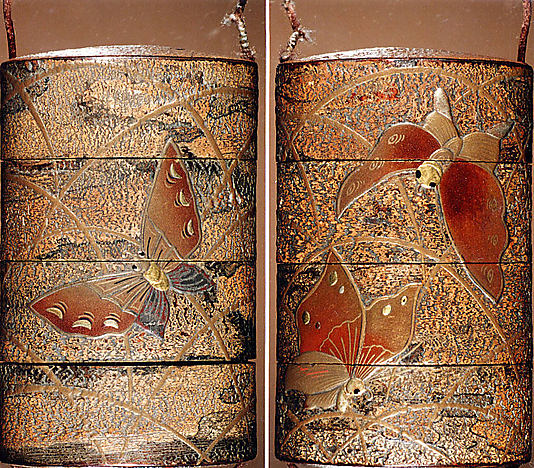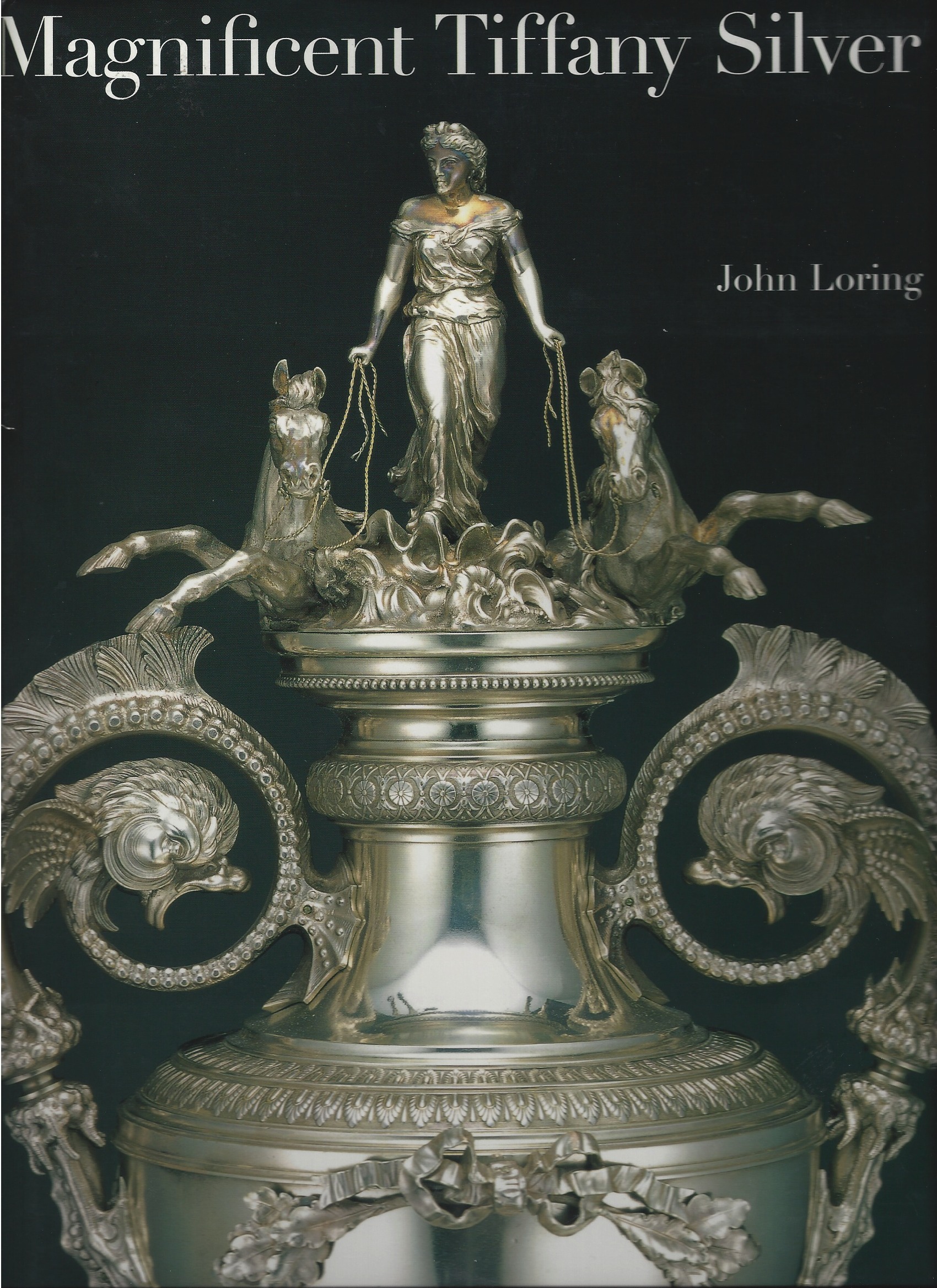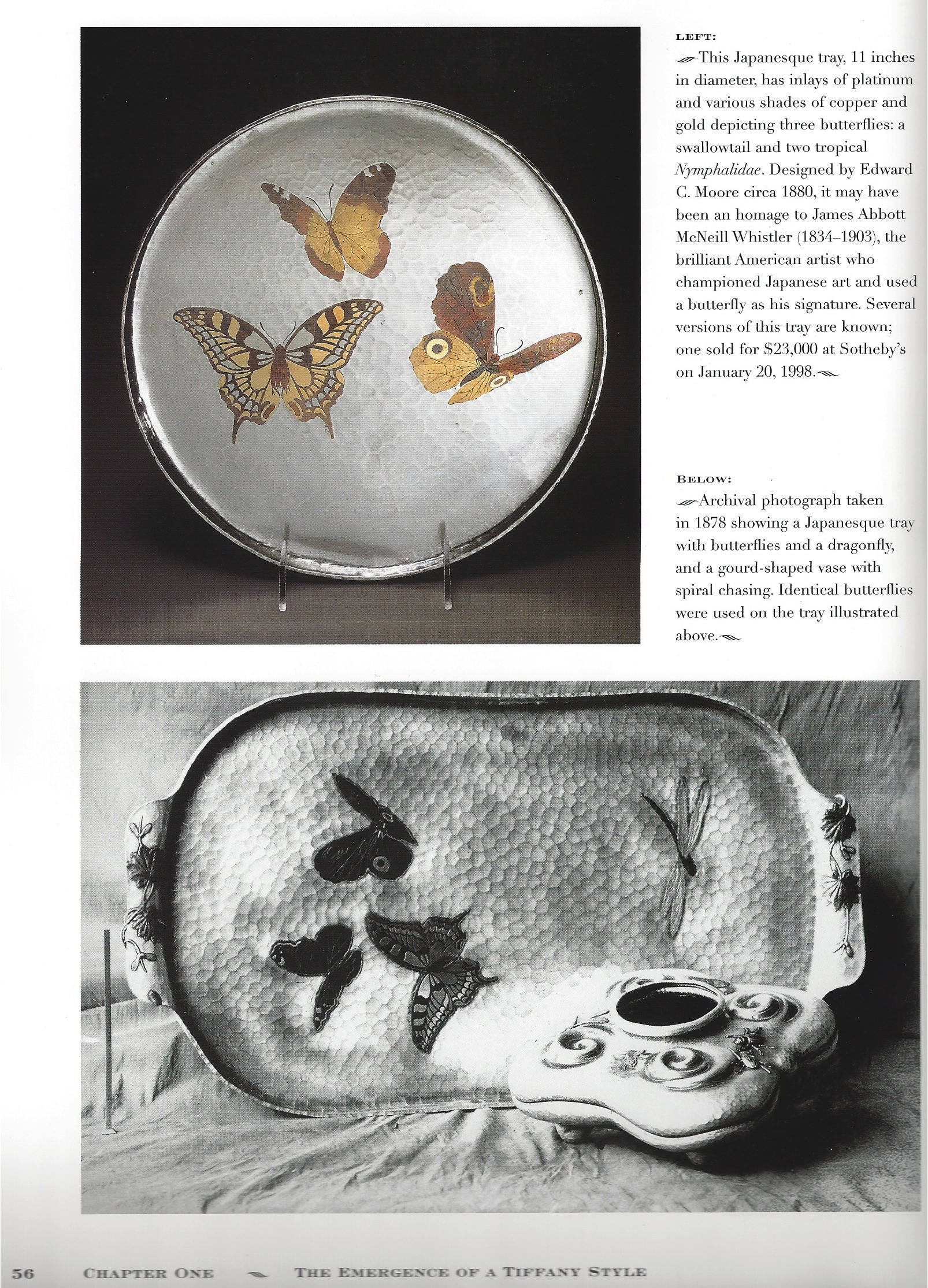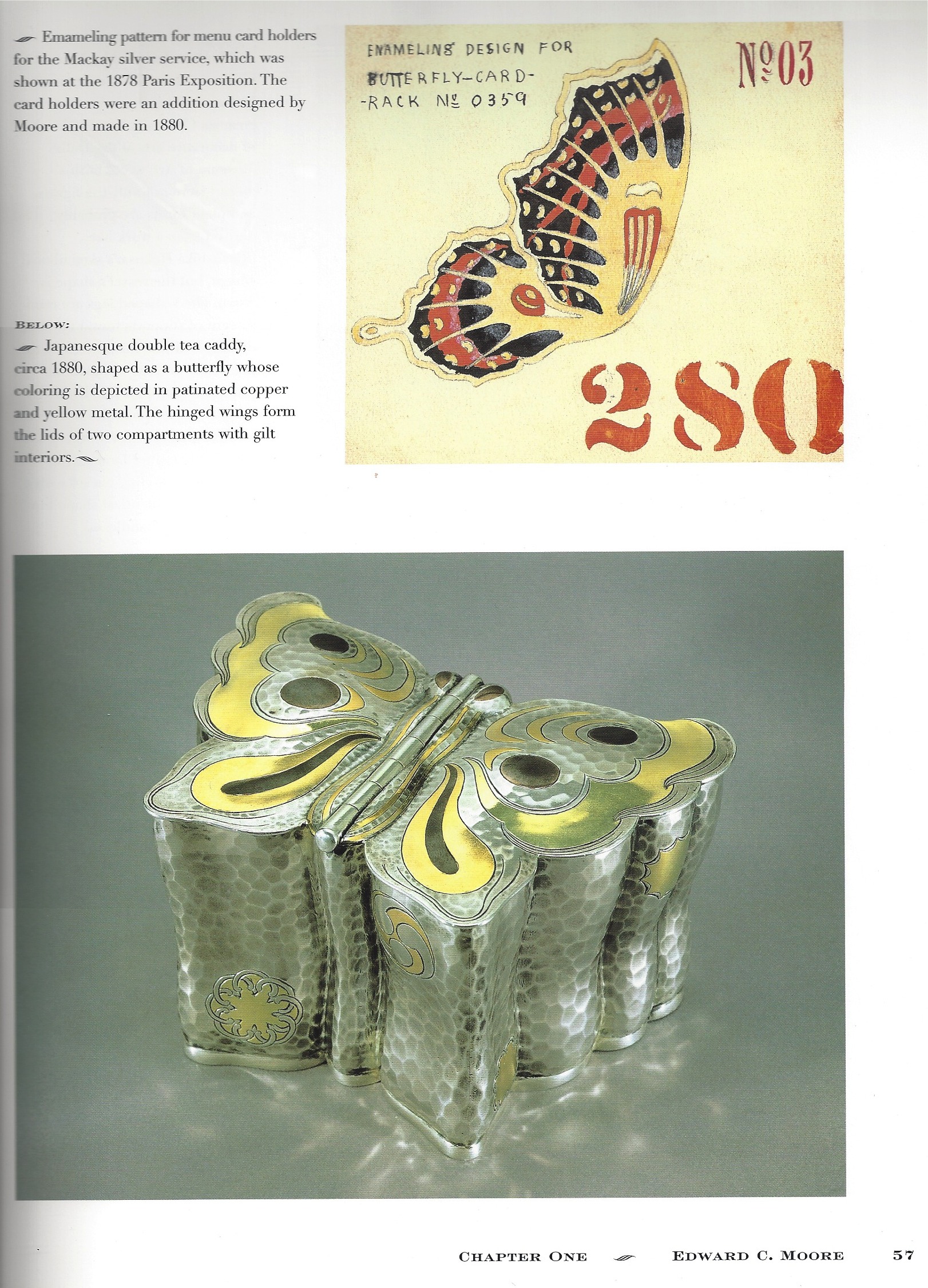In the Japanese style, the hammered surfaces applied with butterflies in silver, gold, copper and shakudo, the saucer further decorated in copper with scattered pebbles, the cup stamped TIFFANY & Co 5520 M 922 STERLING SILVER AND OTHER METALS 824, the saucer stamped TIFFANY & Co 4719 M 922 STERLING SILVER AND OTHER METALS 823, both pieces further engraved M.T. de S. 1880
Cup: 3 ½ in (9 cm) high
Saucer: 7 in (18 cm) diameter
14.5 oz (450 g)
Founded in 1837 by Charles Lewis Tiffany, Tiffany & Co. (originally Tiffany, Young, and Ellis) rapidly became a leading retailer of a variety of exquisite items, including fine silver. Tiffany noted that among the many silversmiths working in America in the period, one stood out from the rest: John C. Moore. Moore was, at this point, producing for Tiffany, but also for his rivals. In 1851, Tiffany succeeded in persuading Moore to produce his pieces exclusively for Tiffany’s. In this same year, John Moore’s son, Edward Moore (1827-1891), succeeded his father in the business, and thus came to work directly for Tiffany’s.
Moore’s early work in the 1850s and 1860s was well made, but not particularly inspired. He worked largely in the Rococo and Classical Revival styles that were popular at the time, both in Europe and America. It was only in 1856 – the year of publication of Owen Jones’ influential book The Grammar of Ornament – that Moore began to develop a personal style, based in large part on the Orientalist designs extolled by Jones. However, only a few years later, the Civil War began, and little work was produced by Moore or Tiffany’s in the early 1860s as a result.
It was not therefore until 1867 that Tiffany’s silver came into its own, exhibited at the Paris Exposition. Here the company showed a ‘Moresque’ tea set designed by Moore, a design in keeping with the exposition’s overall theme of ‘Orientalism’ (and it is notable that this was the first European exposition in which the Japanese themselves had a significant presence). Tiffany & Co. won a bronze medal – the first time an American designer had received an award from a foreign jury. Meanwhile, Moore was able to take first-hand inspiration from a wide selection of Japanese and Middle Eastern pieces. He continued to collect these pieces throughout his life, both through dealers in Europe, and through the British designer Christopher Dresser, who himself undertook several trips to Japan.
Following the Paris Exposition, Moore’s imagination was fired and his designs became increasingly unusual and complex. In 1871, he patented the first design in his new ‘Japanesque’ style. Pieces in this style, along with those inspired by the Middle East, became Moore’s mainstay and typified Tiffany’s silver at this time. Despite his important role in American design reform, Moore’s achievements were little known in America, and much less abroad. This was due both to his retiring personality, and to the Tiffany custom of designer anonymity. As Moore’s style evolved throughout the 1870s and 1880s, his pieces increased in popularity. Indeed, the Japanese themselves took Tiffany’s products seriously as competition in the market, particularly after Moore employed the Japanese technique of mokume, using mixed metal enamels.
This charming cup and saucer is an example of Moore’s ‘Japanesque’ design, with its mixed metal shakudo-style technique and the inclusion of butterflies as decoration. The design may have been inspired by a Japanese lacquer inro decorated with butterflies that Moore had in his own collection (today at the Metropolitan Museum of Art). This suggests that Moore drew on original pieces and first-hand observation as well as broader aesthetic theories to create his designs. The butterfly was an important decorative motif for the Japanese, who considered it an embodiment of the soul and a symbol of the ephemeral world, conferring good fortune and protection.
Japanese-inspired silver pieces designed by Edward C. Moore for Tiffany & Co. may be found in the collections of the Metropolitan Museum of Art, the British Museum, and the Musée d’Orsay.



















